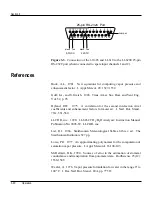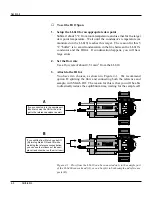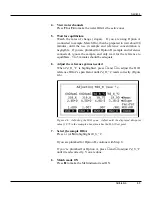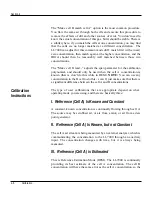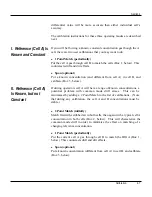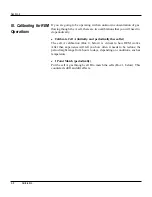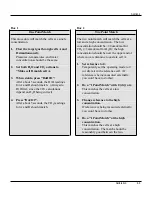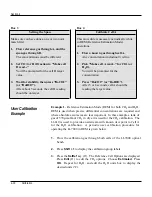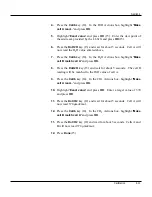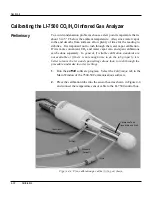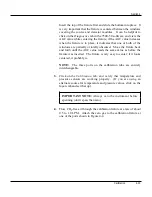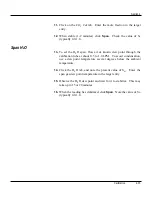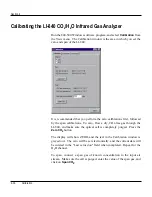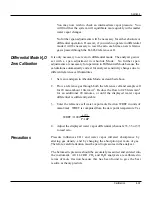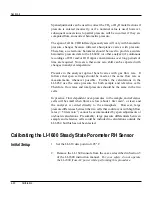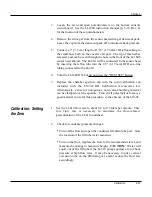
Section 4
Calibration
4-7
differential value will be more accurate than either individual cell’s
accuracy.
The calibration instructions for these three operating modes are described
next.
I. Reference (Cell A) Is
Known and Constant
If you will be flowing a known, constant concentration gas though the A
cell, there are two user calibrations that you may want to do.
●
1 Point Match (periodically)
Put the cell A gas through cell B to match the cells (Box 1, below). This
counteracts drift and dirt effects.
●
Span (optional)
Put a known concentration (and different from cell A) in cell B, and
calibrate (Box 3, below).
II. Reference (Cell A)
Is Known, but not
Constant
If during operation, cell A will have a range of known concentrations, a
potential problem with common mode drift arises. This can be
minimized by adding a 2 Point Match to the list of calibrations. (Note
that during any calibration, the cell A and B concentrations must be
stable.)
●
2 Point Match (initially)
Match first with scrubbed air in both cells, then again with a typical cell A
concentration in both cells (Box 2, below). This will characterize the
common mode drift in order to minimize the effect on matching of a
changing reference concentration.
●
1 Point Match (periodically)
Put the current cell A gas through cell B to match the IRGA (Box 1,
below). This counteracts drift and dirt effects.
●
Span (optional)
Put a known concentration (different from cell A) in cell B, and calibrate
(Box 3, below).








